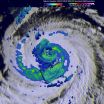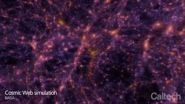(Press-News.org) The same sort of video processing effects that usually require video to be shot in controlled environments where 3-D positions of cameras and objects are precisely known can be achieved with real-world, handheld video shot from consumer-grade cameras using a new approach pioneered by Disney Research.
The technique, developed with Braunschweig University of Technology, compensates for the lack of exact 3-D information about a scene by taking advantage of the fact that most elements of a scene are visible many times in a video. The researchers found they could sample pixels of scene structure from multiple frames of a video and add a filtering process that compensates for inaccuracies in 3-D positions.
Using this method, which the researchers will describe at ACM SIGGRAPH 2015, the International Conference on Computer Graphics and Interactive Techniques, in Los Angeles Aug. 9-13, they showed they could eliminate flickering and other "noise" from videos, correct the blurring of lettering caused by camera movement, and remove objects from the foreground or background of scenes.
These and other effects were demonstrated using video recorded on an iPhone 5s, a GoPro Hero 3, a Canon point-and-shoot camera, or a Sony DSLR camera.
"We believe that our novel processing approach will enable new video applications that were previously impossible, limited, or could not be fully explored because of inevitably unreliable depth information," said Oliver Wang, research scientist at Disney Research.
Processing video based on the 3-D position of pixels - known as scene-space processing - has a number of advantages over traditional, 2-D "image-space" processing. Its utility will only increase as more hardware for recording 3-D information, such as depth-enabled smartphones and Kinect game controllers, reaches the mass market.
Even so, obtaining exact 3-D information will remain elusive for the foreseeable future for video recorded under uncontrolled conditions, said Felix Klose, a researcher at Disney and at UT Braunschweig.
To leverage the high degree of redundancy in most videos and compensate for 3-D inaccuracies, the Disney team developed an efficient method for collecting all of the video pixels sampled from multiple frames that conceivably might represent the same point in a scene. They then developed a filtering process that discards outliers from this sample and computes the output pixel color as a weighted combination of the collected samples.
This framework is compatible with parallel computer processing and, despite the large amount of data accessed, reasonable runtimes can be achieved using standard desktop computers.
INFORMATION:
In addition to Klose and Wang, the research team included Jean-Charles Bazin and Alexander Sorkine-Hornung of Disney Research and Marcus Magnor, a professor of computer science at UT Braunschweig.
For more information and a video, please visit the project web page at http://www.disneyresearch.com/publication/scenespace/.
About Disney Research
Disney Research is a network of research laboratories supporting The Walt Disney Company. Its purpose is to pursue scientific and technological innovation to advance the company's broad media and entertainment efforts. Vice Presidents Jessica Hodgins and Markus Gross manage Disney Research facilities in Los Angeles, Pittsburgh, Zürich, and Boston and work closely with the Pixar and ILM research groups in the San Francisco Bay Area. Research topics include computer graphics, animation, video processing, computer vision, robotics, wireless & mobile computing, human-computer interaction, displays, behavioral economics, and machine learning.
A 3D-printed teddy bear can have a stiff head, a pliable tummy and bendable arms, even though all of it is made of the same relatively stiff material, using a new method developed by Disney Research.
By using the printer to alter the small-scale structure of the material, the Disney researchers showed they could vary its elasticity dramatically within the same object. They developed families of compatible microstructures with varying elastic properties, enabling designers to select the properties desired for each region of an object.
The team demonstrated their new ...
Computer graphics researchers have developed a way to efficiently render images of sand castles, gravel roads, snowmen, salt in a shaker or even ocean spray - any object consisting of randomly oriented, but discernible grains - that look realistic whether viewed from afar or up close.
The new method, developed by Disney Research in collaboration with researchers from Karlsruhe Institute of Technology, ETH Zurich, Cornell University and Dartmouth College, employs three different types of rendering techniques depending on the scale at which the object is viewed.
A sand ...
Chicago, August 5, 2015--A new national survey conducted by The Associated Press-NORC Center for Public Affairs Research reveals a disparity among blacks' and whites' perception of violence against civilians by police. Nearly three-quarters of black respondents consider violence against civilians by police officers to be an extremely or very serious problem, compared to less than 20 percent of whites. However, the poll also finds agreement across racial groups on many of the causes of police violence, as well as further consensus that changes in policies and procedures ...
Disney Research has created LinkEdit, interactive software for predictably changing the shape or motion of planar linkages used in such objects as kinetic sculptures, folding furniture and mechanical toys.
The LinkEdit software enables users to make desired changes in a linkage, such as altering its size or shape, while preserving other features, such as the walking gait of a linkage for a mechanical leg. The researchers demonstrated this capability by making alterations to the Jansen linkage, the building block to the famous walking sculptures created by artist Theo ...
Forehead wrinkles that rapidly deepen and crow's feet that appear suddenly around the eyes might distress the average person, but the ability to quickly and realistically incorporate such details in a facial reconstruction is the key feature of a new performance capture method developed at Disney Research.
The method, which requires only a single video camera such as a webcam, is the first to both operate in real-time and to capture facial features in high resolution, including such details as wrinkles.
"This could open up a variety of new applications, from casual ...
Heavy rain, towering thunderstorms, and a large area are things that NASA satellites observed as Typhoon Soudelor moves toward Taiwan on August 5, 2015.
NASA's Terra satellite passed over Soudelor on August 5, 2015 at 01:45 UTC and the Moderate Resolution Imaging Spectroradiometer (MODIS) instrument captured a visible image of the large storm in the Philippine Sea. The eye appeared to be cloud-filled as bands of thunderstorms spiraled into the center of the storm.
The Global Precipitation Measurement (GPM) mission core observatory, a satellite managed by both NASA and ...
A team of astronomers led by Caltech has discovered a giant swirling disk of gas 10 billion light-years away--a galaxy-in-the-making that is actively being fed cool primordial gas tracing back to the Big Bang. Using the Caltech-designed and -built Cosmic Web Imager (CWI) at Palomar Observatory, the researchers were able to image the protogalaxy and found that it is connected to a filament of the intergalactic medium, the cosmic web made of diffuse gas that crisscrosses between galaxies and extends throughout the universe.
The finding provides the strongest observational ...
Washington, DC, August 5, 2015 -- Potentially harmful bacteria can survive on endoscopes used to examine the interior of the digestive tract, despite a multi-step cleaning and disinfecting process, according to a study published in the August issue of the American Journal of Infection Control, the official publication of the Association for Professionals in Infection Control and Epidemiology (APIC).
Though endoscopes were cleaned in accordance with multi-society guidelines, viable microbes and residual contamination remained on surfaces after each stage of cleaning, ...
Dan's Wild Wild Science Journal
New paper shows global climate model errors are significantly less than thought
Scientists have matched the output of climate models to the way the Earth's temperature record is constructed in a new study in Geophysical Research Letters. Dan Satterfield explores how climate models are doing an even better job at predicting the Earth's temperature than was thought.
Eos.org
On the rebound: Modeling Earth's ever-changing shape
A new modeling tool easily computes the elastic response of changes in loading on Earth's surface to high resolution. ...
While undergoing laparoscopic sleeve gastrectomy induced weight loss and improvements in obesity-related disorders, long-term followup shows significant weight regain and a decrease in remission rates of diabetes and, to a lesser extent, other obesity-related disorders over time, according to a study published online by JAMA Surgery.
Obesity was recognized as a global epidemic by the World Health Organization 15 years ago and rates of obesity have since been increasing. Obesity is currently considered a severe health hazard and a risk factor for diabetes mellitus, hypertension, ...

